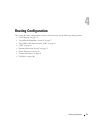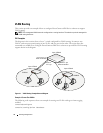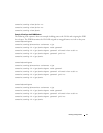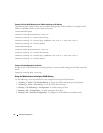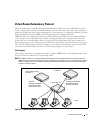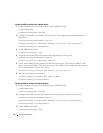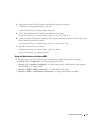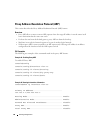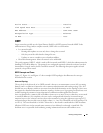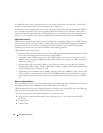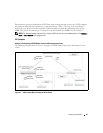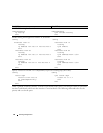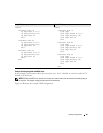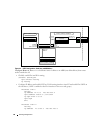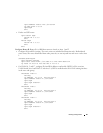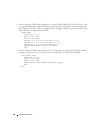
Routing Configuration 81
Active State................................... Inactive
Link Speed Data Rate........................... 10 Half
MAC Address.................................... 00FF.F2A3.888A
Encapsulation Type............................. Ethernet
IP MTU......................................... 1500
OSPF
Larger networks typically use the Open Shortest Path First (OSPF) protocol instead of RIP. To the
administrator of a large and/or complex network, OSPF offers several benefits:
• Less network traffic:
– Routing table updates are sent only when a change has occurred.
– Only the part of the table that has changed is sent.
– Updates are sent to a multicast, not a broadcast address.
• Hierarchical management: allows the network to be subdivided.
The switch supports OSPFv2, which is used on IPv4 networks and OSPFv3, which has enhancements for
handling 128-bit IPv6 addresses. The protocols are configured separately within the software, but their
functionality is largely similar for IPv4 and IPv6 networks. The following description applies to both
protocols, except where noted.
OSPF Concepts and Terms
Figure 4-3, Figure 4-4, and Figure 4-5 show example OSPF topologies that illustrate the concepts
described in this section.
Areas and Topology
The top level of the hierarchy of an OSPF network is known as an autonomous system (AS) or routing
domain, and is a collection of networks with a common administration and routing strategy. The AS is
divided into
areas
. Routers within an area must share detailed information on the topology of their area,
but require less detailed information about the topology of other areas. Segregating a network into areas
enables limiting the amount of route information communicated throughout the network.
Areas are identified by a numeric ID in IP address format
n.n.n.n
(note, however, that these are not used
as actual IP addresses). For simplicity, the area can be configured and referred to in normal integer
notation; however, the software converts these to dot notation by using the right-most octet up to 255
and proceeding to the next left octet for higher values (i.e., Area 20 is identified as 0.0.0.20 and Area 256
as 0.0.1.0). The area identified as 0.0.0.0 is referred to as
Area 0
and is considered the
OSPF backbone
.
All other OSPF areas in the network must connect to Area 0 directly or through a virtual link. The
backbone area is responsible for distributing routing information between non-backbone areas.



